-
 Bitcoin
Bitcoin $88,555.6766
1.18% -
 Ethereum
Ethereum $1,626.4043
-1.22% -
 Tether USDt
Tether USDt $0.9998
-0.01% -
 XRP
XRP $2.1018
-1.27% -
 BNB
BNB $605.8750
0.04% -
 Solana
Solana $140.3422
0.04% -
 USDC
USDC $0.9999
0.00% -
 Dogecoin
Dogecoin $0.1643
1.27% -
 TRON
TRON $0.2481
1.05% -
 Cardano
Cardano $0.6359
-1.63% -
 Chainlink
Chainlink $13.3216
-2.53% -
 UNUS SED LEO
UNUS SED LEO $9.1797
-2.79% -
 Avalanche
Avalanche $20.3681
-2.52% -
 Stellar
Stellar $0.2473
-4.43% -
 Sui
Sui $2.3043
2.50% -
 Shiba Inu
Shiba Inu $0.0...01257
-1.15% -
 Toncoin
Toncoin $2.9429
-3.48% -
 Hedera
Hedera $0.1738
0.16% -
 Bitcoin Cash
Bitcoin Cash $347.0587
1.49% -
 Hyperliquid
Hyperliquid $18.2576
-0.35% -
 Litecoin
Litecoin $79.8456
-0.89% -
 Polkadot
Polkadot $3.7809
-4.73% -
 Dai
Dai $0.9999
-0.01% -
 Bitget Token
Bitget Token $4.4439
-0.50% -
 Ethena USDe
Ethena USDe $0.9991
-0.01% -
 Pi
Pi $0.6313
-0.96% -
 Monero
Monero $216.2035
0.57% -
 Pepe
Pepe $0.0...08138
3.46% -
 Uniswap
Uniswap $5.3889
-1.68% -
 OKB
OKB $50.9281
-0.23%
Does Bitcoin spot trading have leverage?
Bitcoin spot trading offers direct Bitcoin ownership at the current market price, lacking leverage; conversely, leveraged trading, using borrowed funds on platforms like CFDs and perpetual swaps, amplifies potential profits and losses significantly.
Feb 27, 2025 at 07:25 pm
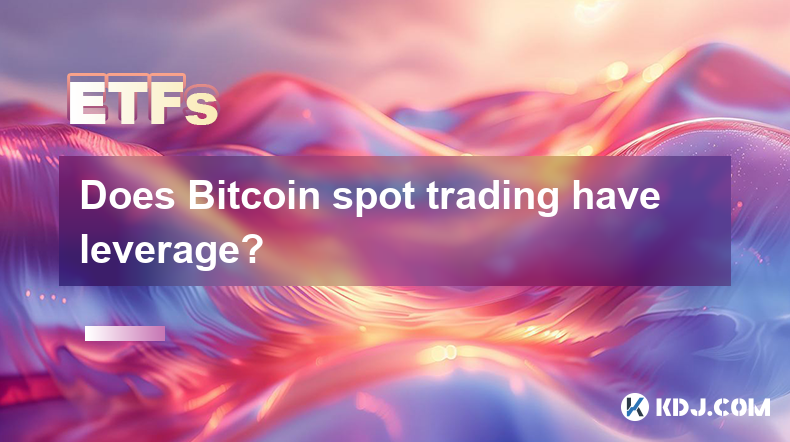
Does Bitcoin Spot Trading Have Leverage? Unpacking the Nuances of Leveraged and Unleveraged Bitcoin Trading
Key Points:
- Spot trading: This involves the immediate exchange of Bitcoin for fiat currency or another cryptocurrency at the current market price. It inherently does not offer leverage.
- Leveraged trading: This utilizes borrowed funds to amplify potential profits (and losses) in Bitcoin spot trading. It is offered through derivatives markets, primarily through contracts for difference (CFDs) and perpetual swaps.
- Risks of leveraged trading: The amplified potential for profit also significantly increases the risk of substantial losses, potentially exceeding initial investment. Understanding margin calls, liquidation, and the mechanics of leverage is crucial.
- Exchanges offering leveraged trading: Various cryptocurrency exchanges provide platforms for leveraged Bitcoin trading, each with its own terms, fees, and risk management tools. It's crucial to carefully evaluate each platform before engaging in leveraged trading.
- Regulatory landscape: The regulatory environment for leveraged cryptocurrency trading varies significantly across jurisdictions. Understanding the legal implications in your region is paramount.
Unpacking the Nature of Bitcoin Spot Trading
- Bitcoin spot trading is the most straightforward method of buying and selling Bitcoin. It’s a direct transaction where you exchange your fiat currency (like USD, EUR, etc.) for Bitcoin at the prevailing market price, or vice-versa. The transaction is executed immediately, hence the term "spot." There's no element of delayed settlement or future price speculation. You own the Bitcoin outright, and your profit or loss is directly tied to the difference between the buy and sell prices. The absence of any intermediary financial instrument means there's no additional complexity or leverage involved. The simplicity is both its strength and its limitation. The strength lies in its transparency and direct ownership. The limitation lies in the slower potential for capital growth, as it relies solely on the underlying price movement of Bitcoin itself. To illustrate, imagine you purchase 1 Bitcoin at $30,000 and sell it at $35,000. Your profit is $5,000, representing a direct return on your initial investment. This profit is solely dependent on the price fluctuation of Bitcoin within the market. The lack of leverage means your potential profit is capped by the amount of Bitcoin you can afford to buy outright.
Exploring the World of Leveraged Bitcoin Trading
- Leveraged trading, in contrast to spot trading, allows you to amplify your potential profits (and losses) by borrowing funds from a broker or exchange. This "leverage" is expressed as a ratio, such as 1:5, 1:10, or even higher. A 1:5 leverage ratio means you can control five times the value of Bitcoin with your own capital. If you have $1,000, you can trade with $5,000 worth of Bitcoin. The amplified returns can be significant, potentially accelerating capital growth. However, the risk is proportionally magnified. A small price movement against your position can quickly lead to substantial losses that exceed your initial investment. The mechanics often involve margin accounts, where you deposit a certain amount of collateral (margin) to secure the borrowed funds. If the market moves against your position, your margin may be depleted, triggering a margin call. This necessitates adding more funds to maintain your position, or facing liquidation – the forced closure of your position to cover losses. This liquidation can happen rapidly, especially during volatile market conditions, resulting in substantial financial losses. For instance, using the same $1,000 and 1:5 leverage, a 10% drop in Bitcoin's price would wipe out your entire $1,000 investment. Understanding and managing risk in leveraged trading is paramount. It requires a deep understanding of market dynamics, risk tolerance, and effective risk management strategies.
Navigating the Landscape of Exchanges Offering Leveraged Bitcoin Trading
- Numerous cryptocurrency exchanges provide platforms for leveraged Bitcoin trading. These platforms offer various trading instruments, including contracts for difference (CFDs) and perpetual swaps. CFDs are contracts that allow you to speculate on the price difference of an asset without actually owning it. Perpetual swaps are similar but aim to track the spot price of Bitcoin indefinitely, eliminating expiry dates. Each exchange has its own unique features, including leverage ratios, fees, margin requirements, and risk management tools. Before choosing an exchange, it's crucial to compare these factors carefully. Consider the reputation and regulatory compliance of the exchange. Look for robust security measures to protect your funds. Evaluate the user interface and the availability of educational resources. Analyze the trading fees and funding rates for perpetual swaps. Assess the level of customer support provided. And, critically, understand the risk management tools offered, such as stop-loss orders, which automatically close your position when the price reaches a predetermined level, limiting potential losses.
Understanding the Regulatory Landscape of Leveraged Bitcoin Trading
- The regulatory environment surrounding leveraged cryptocurrency trading is constantly evolving and varies significantly across jurisdictions. Some countries have implemented stricter regulations to mitigate risks associated with leveraged trading, while others have a more laissez-faire approach. It’s essential to research the specific regulations in your region before engaging in leveraged trading. This includes understanding tax implications, licensing requirements for exchanges, and consumer protection laws. Failure to comply with applicable regulations can lead to legal consequences. The evolving nature of cryptocurrency regulations means that staying informed about updates is crucial. This includes monitoring changes in legislation and guidance from regulatory bodies. Understanding these regulations is vital to ensure legal compliance and protect your financial interests.
FAQs:
Q: What is the difference between spot trading and leveraged trading?
A: Spot trading involves buying and selling Bitcoin at the current market price, with no borrowing involved. Leveraged trading uses borrowed funds to amplify potential profits (and losses), increasing risk significantly.
Q: What are the risks of leveraged Bitcoin trading?
A: The primary risk is the potential for losses exceeding your initial investment due to the amplified price movements. Margin calls and liquidation are significant threats. Market volatility can quickly lead to substantial financial losses.
Q: How does leverage work in Bitcoin trading?
A: Leverage is a multiplier that allows you to control a larger amount of Bitcoin than your capital would normally allow. For example, 1:5 leverage means you can trade five times the value of your initial investment.
Q: Are there any regulations governing leveraged Bitcoin trading?
A: Regulations vary widely by jurisdiction. Some countries have stricter rules than others, aiming to mitigate the risks associated with leveraged trading. It's crucial to understand the regulations in your area.
Q: Where can I find leveraged Bitcoin trading platforms?
A: Many cryptocurrency exchanges offer leveraged trading through CFDs and perpetual swaps. It's essential to research and compare different platforms based on fees, security, and regulatory compliance before choosing one.
Q: What is a margin call and liquidation?
A: A margin call occurs when the value of your leveraged position falls below a certain threshold, requiring you to deposit more funds to maintain your position. Liquidation is the forced closure of your position by the exchange to cover losses if you fail to meet a margin call.
Q: What are CFDs and Perpetual Swaps?
A: CFDs (Contracts for Difference) are contracts that allow you to speculate on the price difference of an asset without actually owning it. Perpetual swaps are similar but designed to track the spot price of Bitcoin indefinitely, without expiry dates. Both are commonly used for leveraged trading.
Q: How can I manage risk in leveraged Bitcoin trading?
A: Risk management is crucial. Utilize stop-loss orders to limit potential losses. Diversify your portfolio. Only trade with funds you can afford to lose. Thoroughly understand the mechanics of leverage and the risks involved before engaging in leveraged trading. Start with small positions and gradually increase your exposure as your understanding and experience grow. Regularly review your trading strategies and adapt them based on market conditions. Never invest more than you can comfortably afford to lose. Consider seeking advice from a qualified financial advisor before engaging in leveraged trading.
Disclaimer:info@kdj.com
The information provided is not trading advice. kdj.com does not assume any responsibility for any investments made based on the information provided in this article. Cryptocurrencies are highly volatile and it is highly recommended that you invest with caution after thorough research!
If you believe that the content used on this website infringes your copyright, please contact us immediately (info@kdj.com) and we will delete it promptly.
- Bitget Exploited: Market-Maker Bot Glitch Triggers $100M Trading Frenzy, Turning $VOXEL into a Crypto Storm
- 2025-04-22 16:40:12
- MANTRA CEO John Patrick Mullin announces plans to burn 300 million OM tokens to stabilize market price after recent massive price crash.
- 2025-04-22 16:40:12
- What is Hyperlane? It is a framework for enabling interoperability among different blockchain networks
- 2025-04-22 16:35:12
- Mantra Burns 16.5% of Its Total Supply to Boost Staking Rewards
- 2025-04-22 16:35:12
- Why Is Polygon (POL) Price Up?
- 2025-04-22 16:30:13
- Can Cardano's Triangle Breakout Drive ADA Price Higher?
- 2025-04-22 16:30:13
Related knowledge

What is the difference in returns between long-term holding of a Bitcoin ETF and holding Bitcoin directly?
Apr 09,2025 at 04:15am
When considering the difference in returns between long-term holding of a Bitcoin ETF and holding Bitcoin directly, it's essential to understand the nuances and factors that affect each investment option. Both approaches have their unique advantages and potential drawbacks, which can significantly impact the overall returns over time. Understanding Bitc...
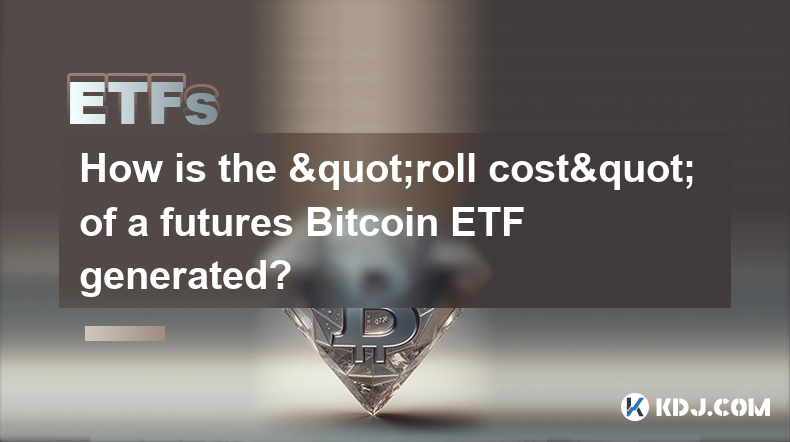
How is the "roll cost" of a futures Bitcoin ETF generated?
Apr 08,2025 at 01:22pm
The 'roll cost' of a futures Bitcoin ETF is a critical concept for investors to understand, as it directly impacts the performance of the ETF. In this article, we will delve into the mechanics of how the roll cost is generated, exploring the underlying processes and factors that contribute to this cost. Understanding Futures ContractsFutures contracts a...
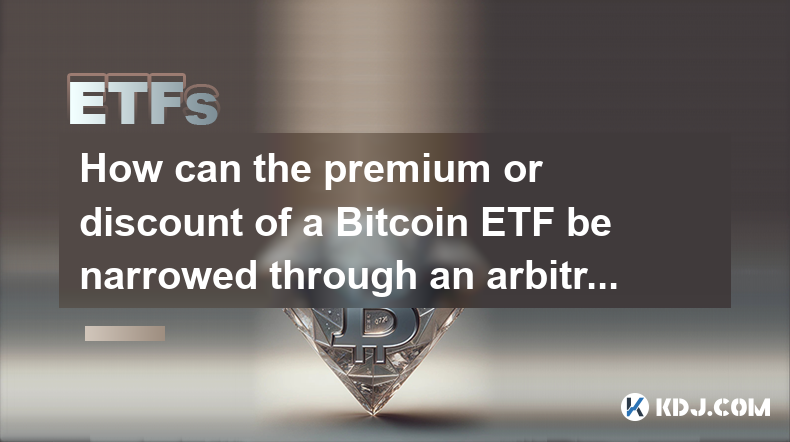
How can the premium or discount of a Bitcoin ETF be narrowed through an arbitrage mechanism?
Apr 09,2025 at 12:07am
Arbitrage mechanisms play a crucial role in narrowing the premium or discount of a Bitcoin Exchange Traded Fund (ETF). Understanding how these mechanisms work can provide valuable insights into the dynamics of Bitcoin ETFs and their relationship with the underlying asset. This article will delve into the specifics of how arbitrage can be used to align t...
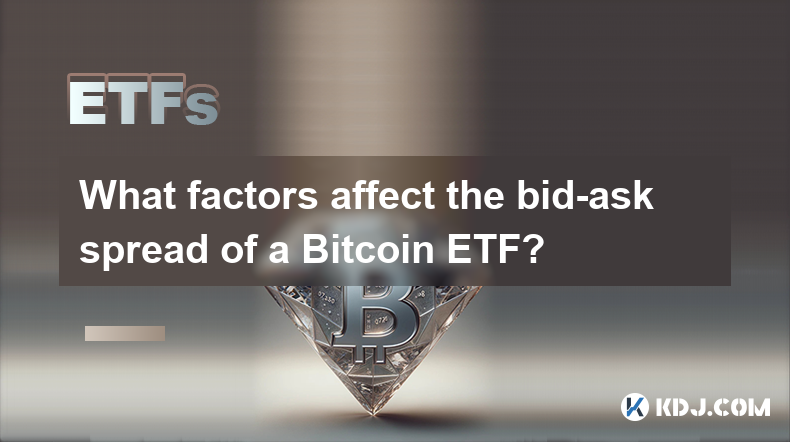
What factors affect the bid-ask spread of a Bitcoin ETF?
Apr 08,2025 at 08:50pm
The bid-ask spread of a Bitcoin Exchange Traded Fund (ETF) is a critical metric that investors and traders closely monitor. It represents the difference between the highest price a buyer is willing to pay (bid) and the lowest price a seller is willing to accept (ask). Several factors influence this spread, and understanding them can help investors make ...
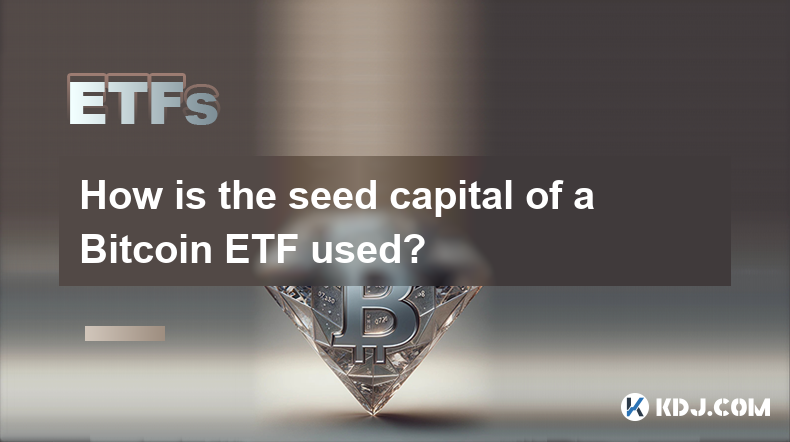
How is the seed capital of a Bitcoin ETF used?
Apr 10,2025 at 02:15pm
The seed capital of a Bitcoin ETF plays a crucial role in the establishment and operation of the fund. This initial investment is used to create the fund's underlying assets, manage operational costs, and ensure the ETF can start trading on an exchange. Understanding how this seed capital is utilized provides insight into the mechanics of Bitcoin ETFs a...

What is the difference between "physically backed" and "synthetic" Bitcoin ETFs in terms of holding assets?
Apr 10,2025 at 04:56pm
Bitcoin Exchange Traded Funds (ETFs) have become a popular way for investors to gain exposure to the cryptocurrency market without directly owning the underlying asset. There are two primary types of Bitcoin ETFs: physically backed and synthetic. Understanding the differences between these two types, particularly in terms of how they hold assets, is cru...

What is the difference in returns between long-term holding of a Bitcoin ETF and holding Bitcoin directly?
Apr 09,2025 at 04:15am
When considering the difference in returns between long-term holding of a Bitcoin ETF and holding Bitcoin directly, it's essential to understand the nuances and factors that affect each investment option. Both approaches have their unique advantages and potential drawbacks, which can significantly impact the overall returns over time. Understanding Bitc...

How is the "roll cost" of a futures Bitcoin ETF generated?
Apr 08,2025 at 01:22pm
The 'roll cost' of a futures Bitcoin ETF is a critical concept for investors to understand, as it directly impacts the performance of the ETF. In this article, we will delve into the mechanics of how the roll cost is generated, exploring the underlying processes and factors that contribute to this cost. Understanding Futures ContractsFutures contracts a...

How can the premium or discount of a Bitcoin ETF be narrowed through an arbitrage mechanism?
Apr 09,2025 at 12:07am
Arbitrage mechanisms play a crucial role in narrowing the premium or discount of a Bitcoin Exchange Traded Fund (ETF). Understanding how these mechanisms work can provide valuable insights into the dynamics of Bitcoin ETFs and their relationship with the underlying asset. This article will delve into the specifics of how arbitrage can be used to align t...

What factors affect the bid-ask spread of a Bitcoin ETF?
Apr 08,2025 at 08:50pm
The bid-ask spread of a Bitcoin Exchange Traded Fund (ETF) is a critical metric that investors and traders closely monitor. It represents the difference between the highest price a buyer is willing to pay (bid) and the lowest price a seller is willing to accept (ask). Several factors influence this spread, and understanding them can help investors make ...

How is the seed capital of a Bitcoin ETF used?
Apr 10,2025 at 02:15pm
The seed capital of a Bitcoin ETF plays a crucial role in the establishment and operation of the fund. This initial investment is used to create the fund's underlying assets, manage operational costs, and ensure the ETF can start trading on an exchange. Understanding how this seed capital is utilized provides insight into the mechanics of Bitcoin ETFs a...

What is the difference between "physically backed" and "synthetic" Bitcoin ETFs in terms of holding assets?
Apr 10,2025 at 04:56pm
Bitcoin Exchange Traded Funds (ETFs) have become a popular way for investors to gain exposure to the cryptocurrency market without directly owning the underlying asset. There are two primary types of Bitcoin ETFs: physically backed and synthetic. Understanding the differences between these two types, particularly in terms of how they hold assets, is cru...
See all articles























































































